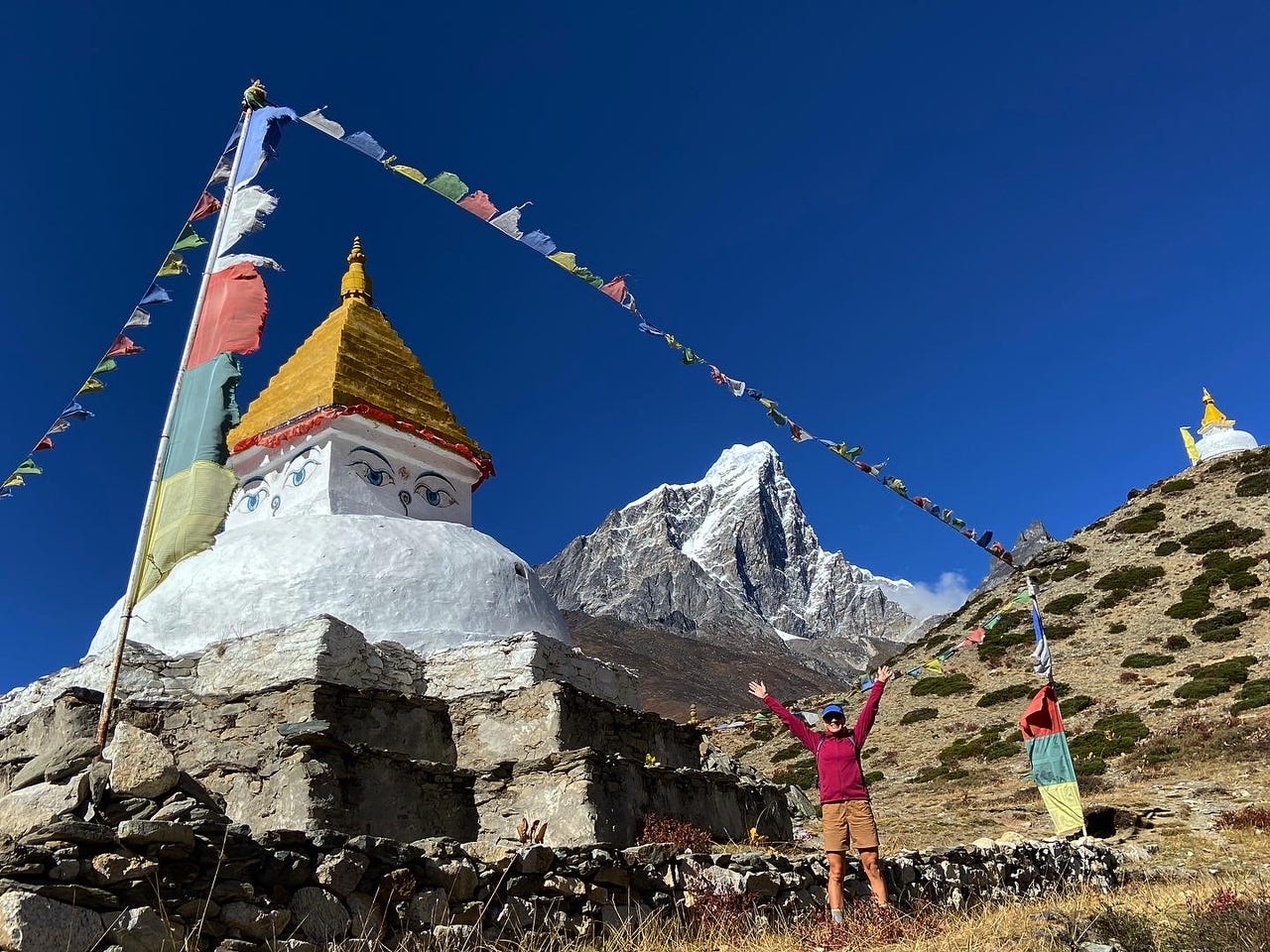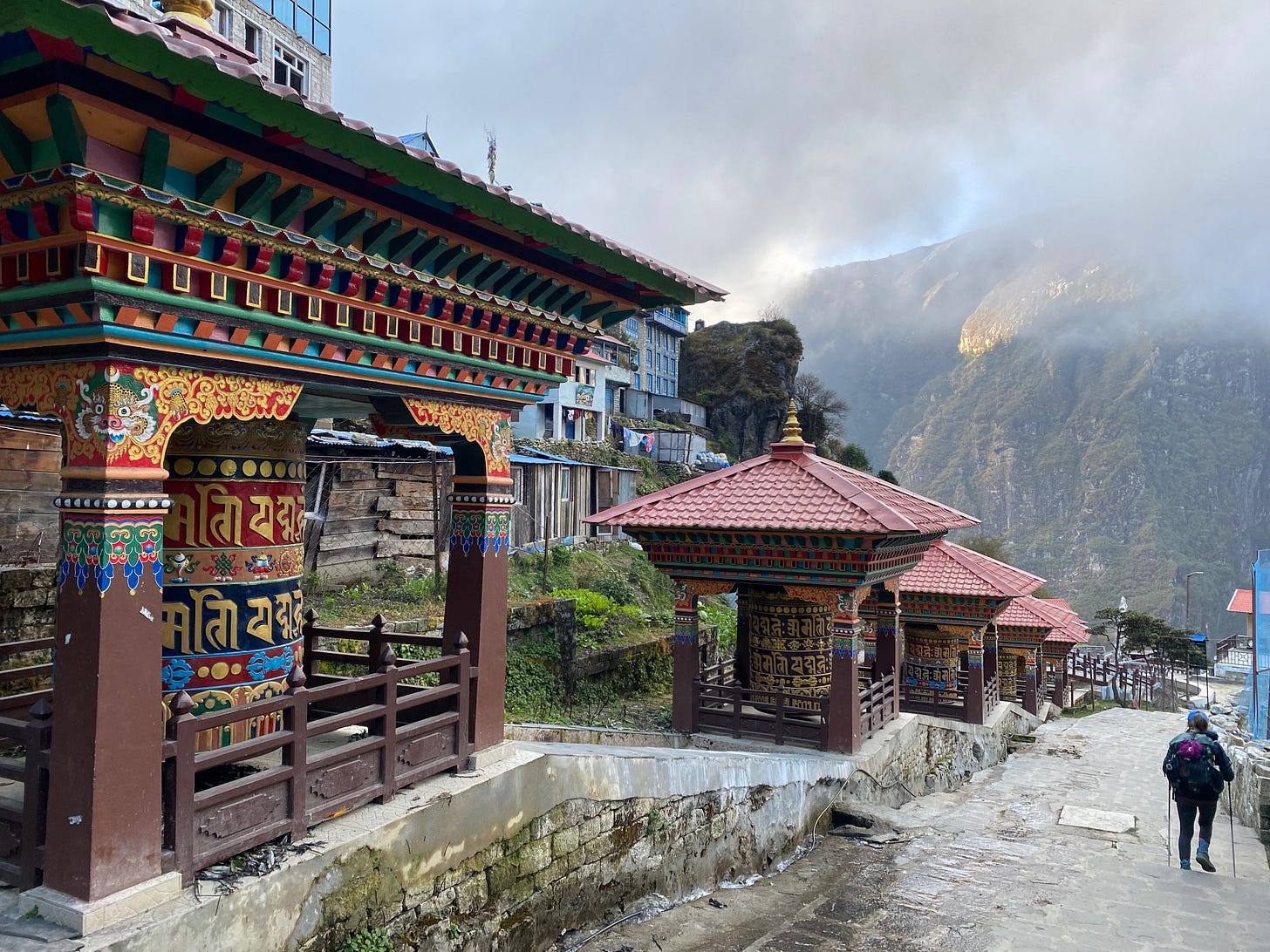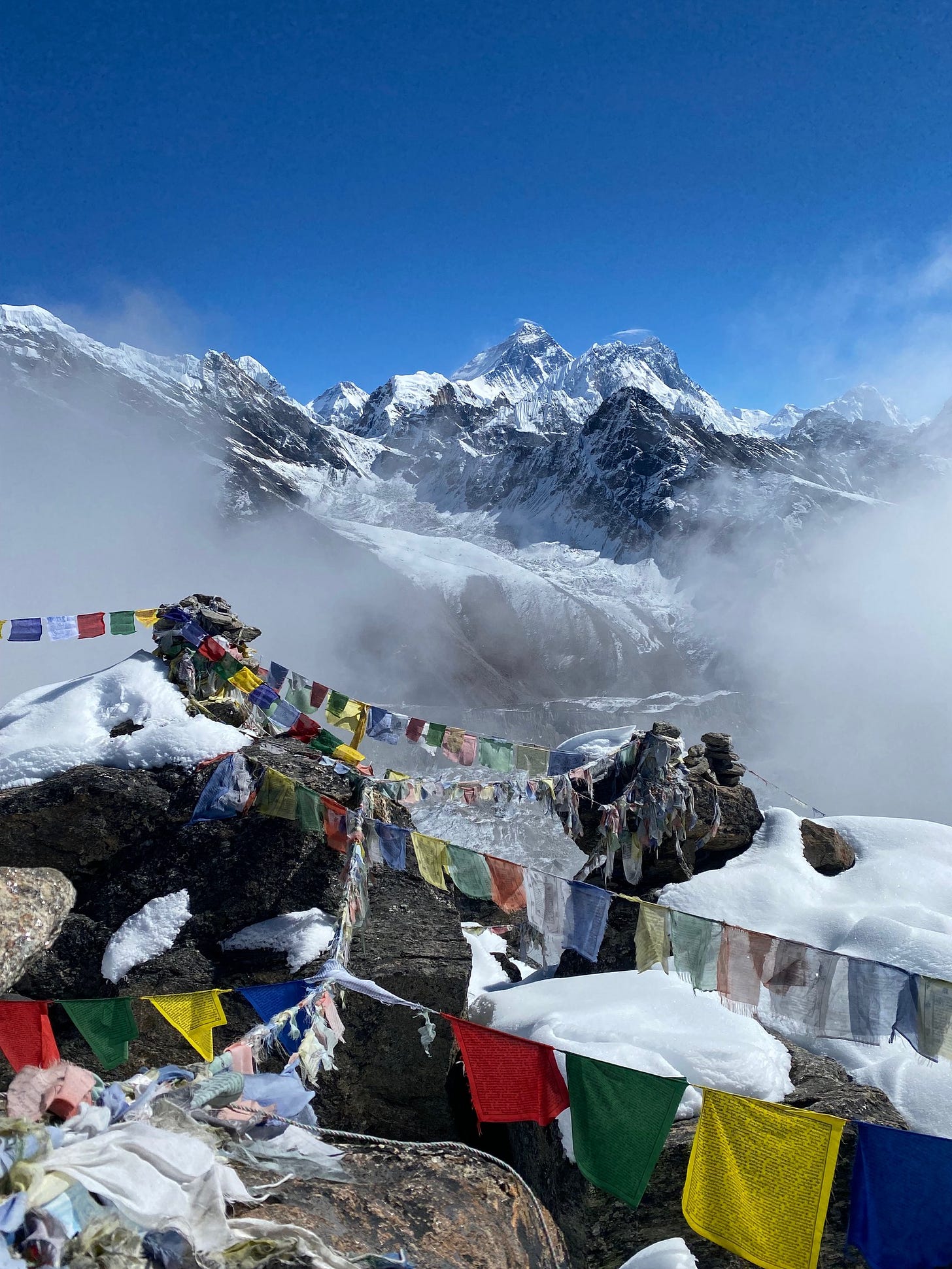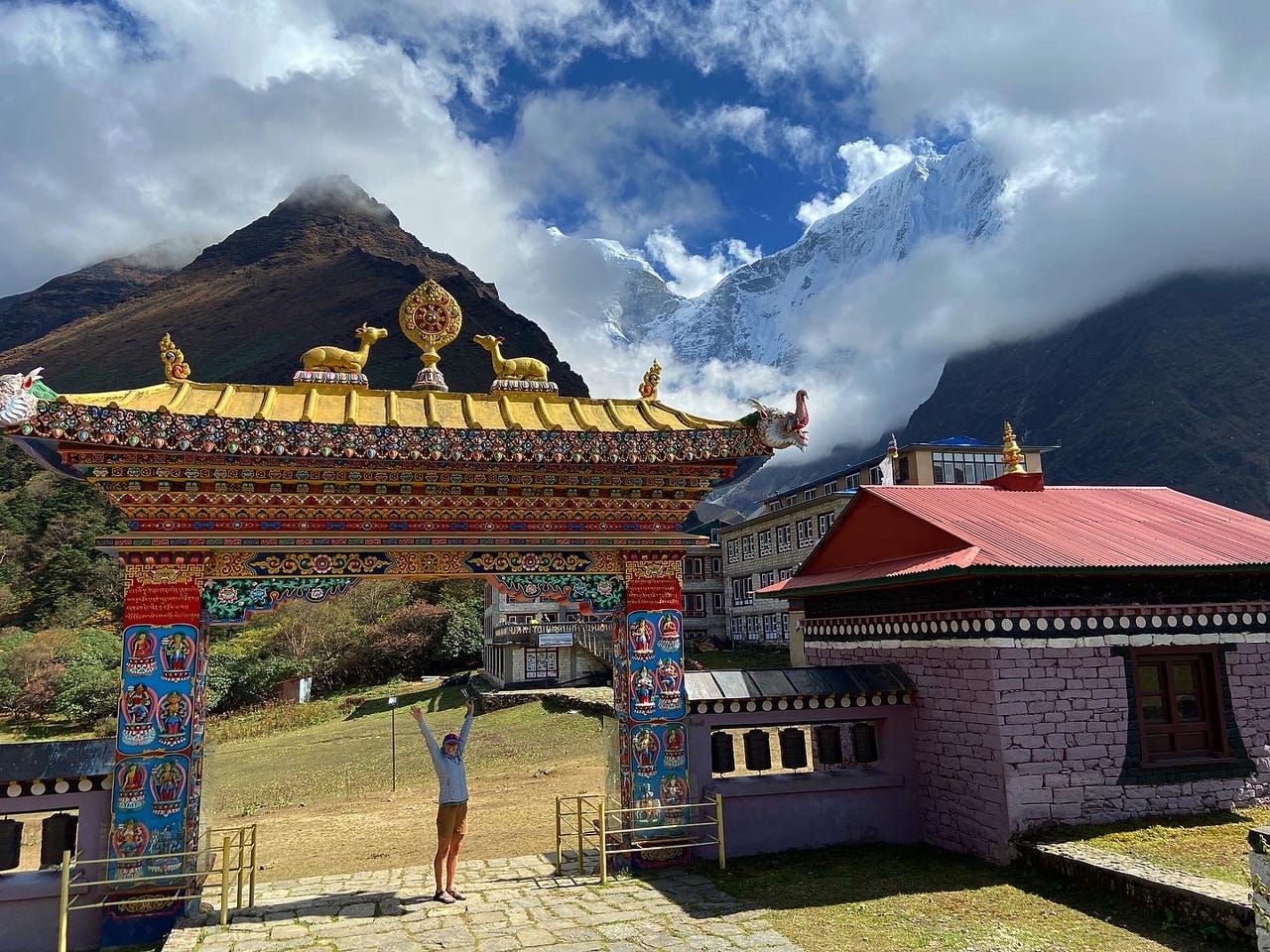One of the great things about trekking in the Himalayas is that not only do you see spectacular mountains, but you see spectacular mountains adorned with white and gold stupas, rows of prayer wheels, rocks carved with prayers, and of course colorful flags on every hilltop and mountain pass. Not only are these sights picturesque AF, but they also serve as a constant reminder that you’re in the Tibetan Buddhist and Sherpa people’s mountains.
One guesthouse owner explained that the Sherpa and Tibetans are “cousins.” Based on the Dalai Lama-heavy decor in most guesthouse common rooms, I think it’s safe to conclude they practice the same version of Buddhism.
Some fun facts for you…
Each morning, homes and guesthouses burn dried juniper in little outside chimneys for purification and good luck.
As we walk along the trails we pass piles on piles of rocks carved or painted with prayers. Called litho-mani, they are all carved with om mani padmi hum, and should be passed on the left.
Similarly, prayer wheels—mani-Korlo—are placed along the trail to be spun by people or by water, (always clockwise!) offering prayers to the weather gods.
White and gold chorten (the Tibetan word), or stupa (the Nepali word), top many hills and are in every town. Each part represents one of the five elements: earth (base), water (dome), fire (spire), air (umbrella), and space (pinnacle). People walk around the stupas reciting prayers, counting their circles by placing small rocks at the base.
Finally, the ubiquitous prayer flags—lungta—are inscribed with om mani padmi hum as well. Brand new ones on top of old frayed and faded ones, strung across every hilltop and pass, these are believed to dispatch a prayer with every flap of each flag. They often have images of winged horses, held sacred by the Sherpa and believed to bring prayers to heaven extra-fast. The Sherpa word for prayer flag is lung-ta, meaning “wind horse.”
On the third day of our trek we stayed in Tengboche, a hilltop village that is mostly a monastery with two guesthouses. The Tengboche Monastery, aka Dawa Choling Gompa, is the spiritual center of the Khumbu region and those climbing Everest often stop in for a blessing on their way up to the mountain.
There the red-cloaked monks chant, sitting in two semi-circles in an incredibly ornate room of carved and painted walls and beams and molding, a giant gold Buddha in the back, a shrine to the Dalai Lama in the middle, and gongs and bells and horns. No pictures allowed! Tourists are allowed in from 1-4:30pm every day, provided they follow the rules: silence, no shoes, sit in the back, mask up, etc.
Thanks for going on this *light* research journey with me. My next post will be back to hiking content and conclude the Three Passes experience.










